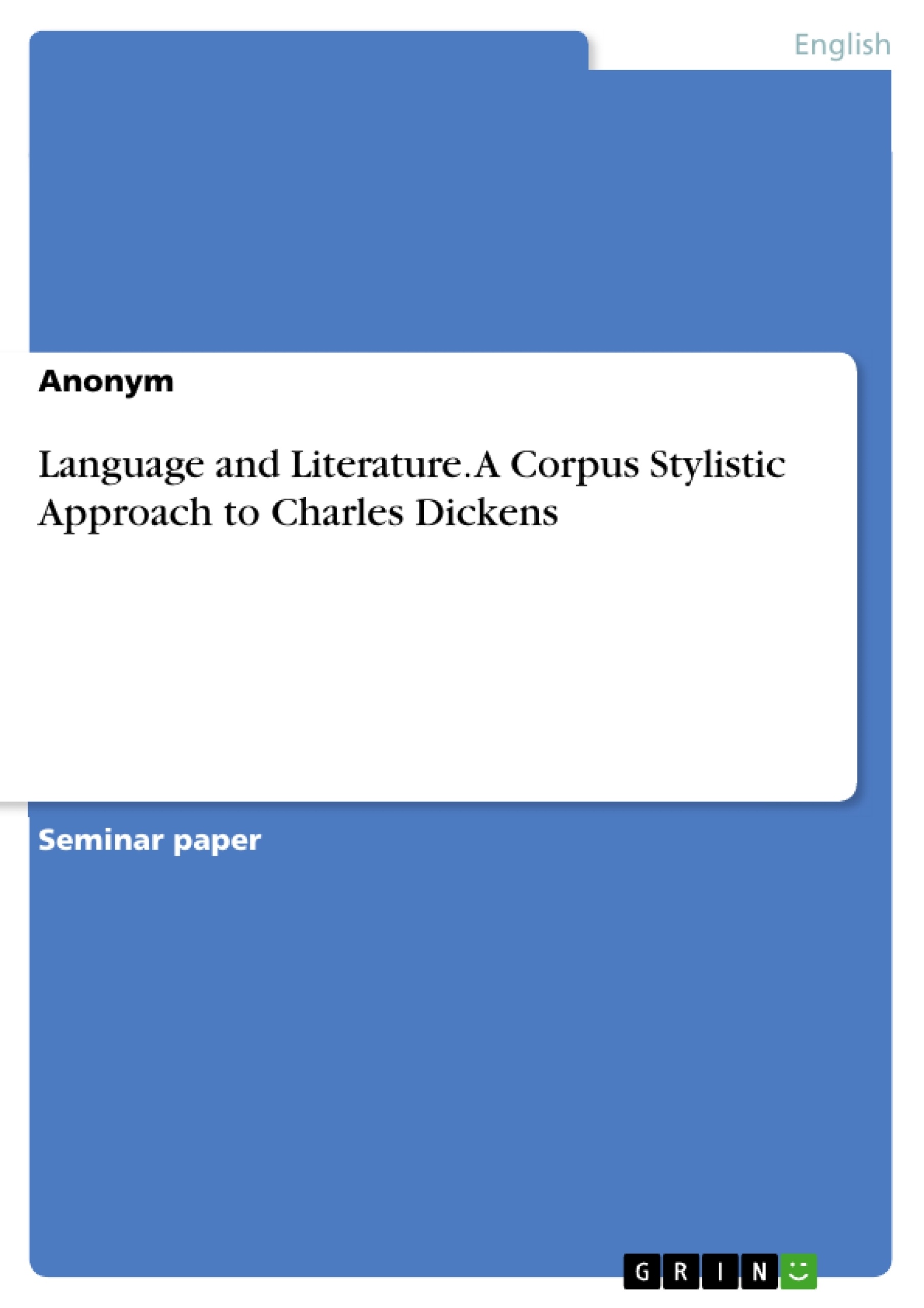Early Corpus linguistics and stylistics began with Chomsky’s approach to language. He explicitly stated that there are three levels of adequacy upon which grammatical and linguistic theories can be evaluated: observational adequacy, descriptive adequacy and explanatory adequacy .
This “revolution” through Chomsky founded the basis for corpus-based analysis, a method which uses adequate examples to give introspection how a language works and how it is used by different authors. Corpus-based analysis offers new insights into studies of language and new computer tools and software make it possible to get access to a wide range of electronic corpora.
In my research paper I will carry out a corpus stylistic approach to the language of 19th century author Charles Dickens. This means that I will basically focus on his special register and investigate his use of particular clusters as recurrent combinations of words used in his corpus. Furthermore, I will focus on A Christmas Carol (1843) as an exemplifying novel of how language patterns are used by Dickens. This masterpiece has the smallest number of words of all his novels, namely 28.541 , which renders it a special challenge to analyse. Moreover, it hasn’t been analysed by many corpus linguists before which puts A Christmas Carol in the light of a nearly unexamined piece of art ready to explore.
My thesis which will be developed in the following chapters would be that Dickens’s novels, especially A Christmas Carol, provide a unit of meaning, their own worlds of text, in which Dickens’s unique style can be sifted out, providing recurring clusters which offer a corpus work based on effective comparison.
To enter the deep analysis to provide a well-worked out research paper I will start with a description and findings of corpus analysis. Secondly, I will spend a chapter on three-, four- and five-word clusters in the Dickens Corpus and especially A Christmas Carol with particular focus on five-word clusters. Moreover, I will introduce the five categories of labels, body part, speech, time and place and as if clusters and examine these categories in Dickens’s Great Expectations (1861) and A Christmas Carol as two examples of a contrastive analysis. I will finish my work by concluding my previous discoveries.
Inhaltsverzeichnis (Table of Contents)
- 1 Introduction
- 2 Outline of Corpus Analysis
- 3 Three, Four- and Five-Word Clusters in the Dickens Corpus and A Christmas Carol
- 3.1 Introduction to A Christmas Carol
- 3.2 Corpus and Data
- 3.3 Three-, Four- and Five-Word Clusters
Zielsetzung und Themenschwerpunkte (Objectives and Key Themes)
This research paper explores the stylistic patterns in the language of Charles Dickens, particularly in his novel *A Christmas Carol*. It focuses on the identification and analysis of recurring word clusters, aiming to understand how Dickens's unique style contributes to the meaning and impact of his writing. The main objectives and themes include:- Analyzing Dickens's use of three-, four-, and five-word clusters in his works, with a particular emphasis on *A Christmas Carol*.
- Examining the stylistic functions of these clusters, exploring how they contribute to meaning, characterization, and atmosphere.
- Comparing the frequency and significance of these clusters in *A Christmas Carol* and *Great Expectations*, highlighting potential stylistic variations between Dickens's works.
- Investigating the relationship between recurring word clusters and Dickens's social commentary and the portrayal of social realities in his time.
- Exploring the application of corpus stylistic methods to the study of literary texts, highlighting its potential for understanding the nuances of authorial style.
Zusammenfassung der Kapitel (Chapter Summaries)
- Chapter 1: Introduction - This chapter introduces the concept of corpus stylistics and its application to analyzing Charles Dickens's works. It establishes the theoretical framework for the study, highlighting the importance of corpus-based methods for understanding language usage and stylistic features. The chapter emphasizes the use of word clusters as a key tool for exploring Dickens's unique stylistic patterns, particularly in *A Christmas Carol*.
- Chapter 2: Outline of Corpus Analysis - This chapter delves into the broader context of corpus analysis, examining its methodology and applications in linguistics and stylistics. It discusses the use of corpora for studying language variation, authorial fingerprints, and the social dimensions of language. The chapter also introduces key concepts from corpus linguistics, such as the association of meaning and form, and the importance of studying language usage in context.
- Chapter 3: Three-, Four- and Five-Word Clusters in the Dickens Corpus and *A Christmas Carol* - This chapter focuses on the specific analysis of three-, four-, and five-word clusters in Dickens's works. It provides an overview of the Dickens Corpus, including its size and composition. The chapter then presents a detailed analysis of these clusters in *A Christmas Carol*, highlighting their frequency, distribution, and potential stylistic functions. It explores the relationship between these clusters and the novel's themes, characters, and atmosphere. The chapter also includes a comparative analysis of these clusters in *Great Expectations*, exploring potential stylistic variations between Dickens's novels.
Schlüsselwörter (Keywords)
Corpus stylistics, Charles Dickens, *A Christmas Carol*, *Great Expectations*, word clusters, recurrent combinations, stylistic patterns, linguistic analysis, social commentary, authorial style, literary analysis, corpus-based methods.- Quote paper
- Anonym (Author), 2010, Language and Literature. A Corpus Stylistic Approach to Charles Dickens, Munich, GRIN Verlag, https://www.grin.com/document/213427



